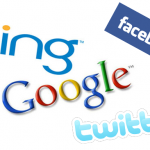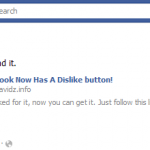
The social networking giant, Facebook, turned eight recently. Facebook was launched on February 4, 2004. For a few stats, 2011 ended with Facebook having over 845 million monthly users over 483 million daily users, and over 425 million mobile users.
But not many know that in 2004, Facebook co-founder and CEO Mark Zuckerberg had plans to sell the social network to a bigger company, but he ended up building it. And today it is the world’s biggest social network, which just filed to go public few days ago.
For a brief history of this social network, Mark Zuckerberg along with his three other co-founders, all college roommates and fellow students of Harvard University: Eduardo Saverin, Dustin Moskovitz, and Chris Hughes, were with him. Their main intention was to build the service exclusively for Harvard students, initially. But in no time they expanded to other colleges in the Boston area, the Ivy League, and Stanford University.
 Moving on, one saw added support for students at various other universities, and eventually expanded to allow for high school students as well. This step saw young teenagers entering the network. So, now anyone aged 13 and over could register on the social network.
Moving on, one saw added support for students at various other universities, and eventually expanded to allow for high school students as well. This step saw young teenagers entering the network. So, now anyone aged 13 and over could register on the social network.
Facebook personally believes that the age limit should be removed, as its known that currently, millions of Facebook users are below the minimum age. The social networking site admits that there is no single solution for enforcing age restrictions. But the Children’s Online Privacy Protection Act (COPPA) mandates websites that collect information about users (like Facebook) aren’t allowed to sign on anyone under the age of 13.
Whatever may be the past, the present and the future for Facebook only looks bright.
Talking about the IPO last week, Facebook released numbers, as well as pictures in a timeline like flow. Emil Protalinski of ZDNet has transcribed the same as follows:
- February 2004: Founded under the name thefacebook.com at Harvard University.
-
September 2004: Introduced the Facebook Wall, a forum for users to post messages to their friends.
-
2004: Began to expand to colleges and universities around the country.
-
2004: Recorded $382,000 in revenue.
-
May 2005: Grew to support more than 800 college networks.
-
September 2005: Added high school networks.
-
October 2005: Added international school networks and introduced Photos.
-
2005: Recorded $9 million in revenue.
-
April 2006: Launched Facebook Mobile.
-
May 2006: Expanded Facebook’s availability to workplace networks.
-
August 2006: Rolled out first version of the Facebook API.
-
September 2006: Opened registration broadly; introduced News Feed.
-
November 2006: Launched Share feature on over 20 partner sites.
-
2006: Recorded $48 million in revenue.
-
May 2007: Launched the Facebook Platform with 65 developers and 85 apps.
-
November 2007: Launched self-service ad platform and Facebook Pages.
-
2007: Recorded $153 million in revenue.
-
April 2008: Introduced Chat for users to instant message with their friends.
-
December 2008: Launched Facebook Connect, the next iteration of the Facebook Platform.
-
2008: Expanded to 23 languages offered including French, German, and Spanish.
-
2008: Recorded $272 million in revenue.
-
February 2009: Introduced the Like button, which lets users connect with things they care about both on and off Facebook.
-
May 2009: Launched Facebook Payments.
-
2009: Recorded $777 million in revenue.
-
April 2010: Introduced Graph API, a new programming interface for the Facebook Platform, and Social plugins, a set of easy-to-use modules allowing anyone to integrate with the Facebook Platform.
-
October 2010: Launched Groups, a shared space for users to discuss common interests.
-
2010: Recorded $1,974 million in revenue.
-
September 2011: Introduced Timeline, an enhanced and updated version of the Facebook Profile.
-
September 2011: Launched the next iteration of Open Graph.
-
2011: Recorded $3,711 million in revenue.


